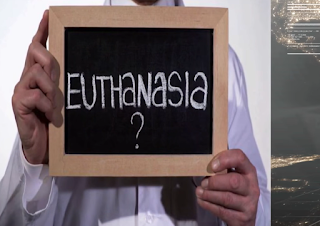Qutub Complex has different monuments and buildings from Delhi Sultanate. It is situated at Mehrauli in Delhi, India. Many rulers like Qutub-ud-din Aibak, Iltutmish, Ala-ud-din Khilji, Firoz Shah Tughlaq and The Britishers has given their contribution in building and maintaining the complex. There are several monuments and buildings are present in the complex. They are as follows:-

- Qutub Minar
- Quwwat-ul-Islam Mosque
- Alai Darwaza
- Alai Minar
- Tomb of Iltutmish
- Tomb of Ala-ud-din Khilji
- Tomb of Imam Zamin
- Iron Pillar
- Lantern Pillar
- Sanderson Piller
Let's know about them one-by-one.
Qutub Minar
After winning the battle against Prithvi Raj Chauhan in The Second Battle of Tarain in 1192, Mohammad Ghori left his governor Qutub-ud-din Aibak to rule India. After the death of Ghori, Aibak became the master of Hindustan and founded the Slave Dynasty in 1206 AD. He destroyed 27 Hindu and Jain temples, and used the materials of temples in his first major building, Quwwat-ul Islam.
Aibak began the construction of Qutub Minar in 1192 AD. He died while playing polo in 1210 AD. When he died, the construction of Qutub Minar was incomplete. Only one storey of the Minar was completed till his death. The construction of Minar was completed by his successor and his son-in-law, Shamsuddin Iltutmish (1211AD-1236AD) in 1220AD.
The Qutub Minar was made on the memory of famous sufi saint, Bakhtiyar Kaki but it is also recongnized as a 'Victory Tower' as Ghori wins the battle against Prithvi Raj Chauhan. It is also marked as beginning of Islamic rule in India. In 1368, The Minar was damaged by lightening. Firoz Shah Tughlaq (1351 AD-1388 AD) repaired The Minar and he replaced the damaged storey with two new storeys made up of red sand stone and white marble to give it more strength to face any natural calamity. Thus it has five Minars at present. Inscriptions also indicate further repairs was made by Sikandar Lodhi(1489 AD - 1517 AD) in 1503 AD.
Features of Minar
- Qutub Minar is the world's tallest brick minaret, which measures 72.5 metres or 239 feet.
- It's diameter is 14.3 M at the base and 2.7 at the top.
- Qutub Minar is UNESCO world's heritage site.
Gallery
Quwwat-ul-Islam Mosque
The Quwwat-ul-Islam mosque is also know as Masjid-I-Jami. It is known as the oldest mosque of India. The mosque was built by Qutub-ud-din Aibek by ruins of 27 Hindu and Jain temples. The mosque is believed to built in between 1193-1197 AD. Few changes were made by Iltutmish and Ala-ud-din Khilji in this mosque. The images of Hindu gods and goddess is still visible in some pillers or walls of this mosque. This mosque is built on the same pattern in which 'Adhai di ka Jhopra' was made. The 'Adhai din ka Jhopda' is made in two and a half day thus, it is named as 'Adhai din ka Jhopda'
Alai Minar & Alai Darwaza
Alai Minar was a very ambitious project of Ala-ud-din Khilji. Khilji wanted to make it double the size of Qutub Minar but after his death none of his successors made this. The Alai Minar is an uncompleted project. Alai Darwaza is the main gate from the southern side of the Quwwat-ul-Islam mosque in the Qutub complex. It was built by Ala-ud-din Khilji in 1311 AD. It is constructed using red sandstone and is adorned with white marble. The walls of the Alai Darwaza are intricately inscribed with Nashk script.
Iron Pillar
The iron pillar, also known as 'Ashokan Pillar' is one of the world's foremost metallurgical curiosities. The pillar is 7.21 Metres high and weighs more than six tonnes. It was originally erected by Chandragupta II Vikramaditya (375-414AD) in front of a Vishnu Temple at Udayagiri and later it was shifted to its present location by Anangpal in 10'th century. The pillar bears an inscription in Brahmi script. The pillar is not rusted yet!
Tombs of Iltutmish & Ala-ud-din Khilji
The tomb of Iltutmish and Ala-ud-din Khilji is also present in the campus of Qutub Complex. The tomb of Iltutmish lies to the northwest of the Quwwat-ul-Islam Mosque. Iltutmish's tomb is very amazingly made and it consists Islamic verses on the wall.
Besides these monuments, There is also a Garden, A Lantern Piller and A Sanderson Dial is present in the Qutub Complex. The Qutub Complex recognize as a very important site in the in Indian history that shows not only the magnificent Islamic monuments but it also shows how Hindus are humiliated from ancient time by the Islamic invaders in India. So make sure you will have a look at all the monuments, Not only the Qutub Minar the very next time you visit the Qutub Complex.









